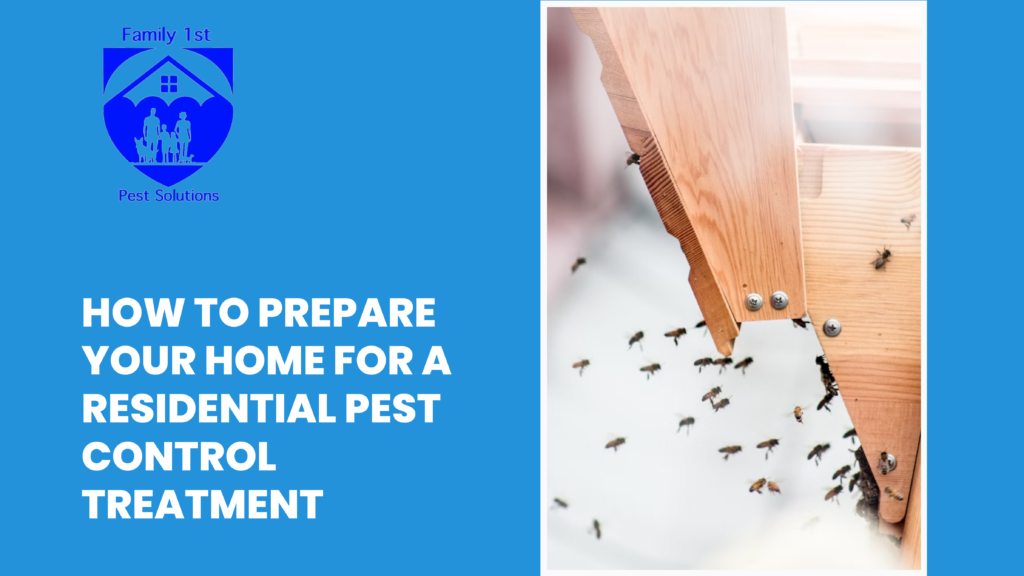Residential pest control treatments are essential to keep your home safe, clean, and pest-free. Whether you are dealing with ants, cockroaches, rodents, or other unwanted pests, professional pest control can effectively eliminate infestations and prevent future problems. However, to maximize the effectiveness of the treatment, proper preparation of your home is crucial. Preparing your home not only ensures the pest control products work efficiently but also helps protect your family and pets during the process.
In this article, we’ll guide you through the key steps you need to take to prepare your home for a residential pest control treatment, making the process smooth and successful.
Why Preparing Your Home Matters
Before a pest control technician applies treatments, there are safety and effectiveness considerations. Cleaning and preparing your space can:
- Improve pesticide penetration and coverage
- Minimize risks to family members and pets
- Prevent pest resistance by allowing treatments to reach hidden areas
- Ensure long-lasting pest control results
Following these preparation steps helps you get the most out of your service.
Step 1: Communicate with Your Pest Control Provider
Start by asking your pest control provider for specific instructions on how to prepare your home. Different pests and treatment types may require unique preparations. For example, preparing for termite treatment differs from preparing for a bed bug treatment. Clear communication ensures you follow the right protocols.
Step 2: Clear Clutter and Clean Your Home
Remove clutter from floors, counters, and cabinets. Clutter provides hiding spots for pests and can prevent effective treatment. Vacuum and mop floors thoroughly to remove dirt, food crumbs, and pest debris.
Pay special attention to kitchens, bathrooms, basements, and storage areas, where pests are most active. Empty trash cans and clean recycling bins to eliminate attractants.
Step 3: Store Food and Utensils Properly
Seal all food items in airtight containers and store them in cabinets or the refrigerator. Remove any pet food bowls and store pet food securely. Cover or put away dishes, utensils, and cookware to prevent contamination.
Step 4: Protect or Remove Pets and Aquariums
Pets should be kept away from the treatment area during and after pest control. Follow your provider’s advice on when it’s safe to bring pets back inside.
If you have aquariums, cover or temporarily move them to prevent exposure to chemicals. Make sure all pets’ bedding and toys are cleaned or replaced if necessary.
Step 5: Move Furniture Away from Walls
Pull furniture, beds, and appliances at least a few inches away from walls. Pest control products are typically applied along baseboards, wall crevices, and other pest entry points, so this clearance allows the technician to treat these areas thoroughly.
Step 6: Vacuum Carpets and Upholstery
Vacuuming removes pest eggs, larvae, and debris from carpets and furniture. This step is especially important for bed bug or flea treatments. Dispose of vacuum bags or clean canisters immediately to avoid reinfestation.
Step 7: Seal Entry Points and Repair Damage
Although the technician will treat existing infestations, sealing gaps and cracks in windows, doors, and foundations helps prevent new pests from entering. Repair any damaged screens or weather stripping to enhance your home’s defense.
Step 8: Plan for Ventilation and Access
Some treatments may require windows and doors to remain open for ventilation. Ensure easy access to all rooms for the pest control technician and plan for your family to stay out during the treatment and for the recommended re-entry period.
Step 9: Follow Post-Treatment Instructions
After the treatment, adhere strictly to the pest control provider’s guidelines. Avoid cleaning treated surfaces for the advised period, and keep pets and children away until it’s safe. These instructions help maintain the treatment’s effectiveness.
Step 10: Schedule Follow-Up Treatments if Needed
Many pest control services recommend follow-up visits to ensure pests are fully eliminated. Stay in touch with your provider to schedule necessary follow-ups and maintain ongoing pest prevention.
Conclusion
Proper preparation is key to the success of any residential pest control treatment. By clearing clutter, securing food, protecting pets, and following your pest control professional’s advice, you can ensure effective pest elimination and a healthier home environment. Take these steps seriously to maximize results and enjoy a pest-free living space.

